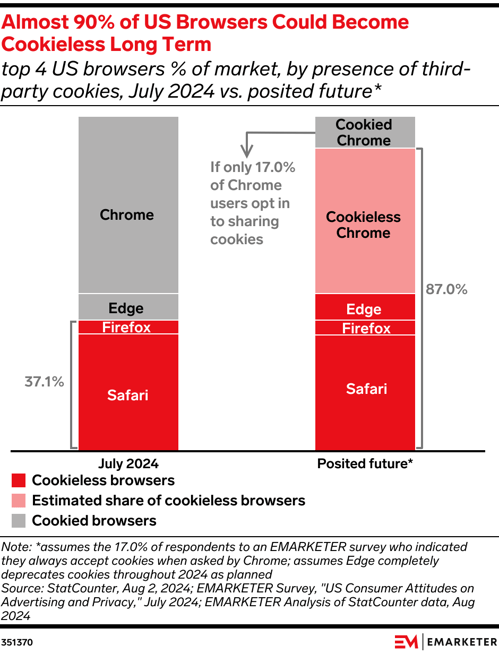In a surprising twist, Google has decided to keep third-party cookies alive in its Chrome browser, despite years of planning to phase them out. This decision has brought a sigh of relief to many in the advertising industry, but it’s far from a permanent reprieve.
Google’s new approach centers on giving users an “informed choice” regarding cookies, a move that could still lead to a significant decline in cookie usage as consumers opt out. Evelyn Mitchell-Wolf from eMarketer highlights that while this delay provides some breathing room, it doesn’t eliminate the need for cookie-less strategies. With other browsers like Safari and Firefox already blocking third-party cookies and privacy laws tightening, advertisers must continue to explore alternatives.
Additionally, Google is still pushing forward with its Privacy Sandbox initiative, which aims to develop privacy-preserving alternatives to cookies. However, early tests indicate that publisher ad revenues are significantly lower when using Privacy Sandbox compared to traditional cookies, raising concerns about its long-term viability.
Consumer Choice Will Drive the Future of Cookies
Despite Google’s decision to retain third-party cookies, consumer choice will play a crucial role in shaping the future. A May 2024 eMarketer survey revealed that only 17% of US consumers always accept cookies, suggesting that over 90% of browsers could become cookieless long-term. While comparisons to Apple’s AppTrackingTransparency (ATT) opt-in rates show that acceptance may increase over time, it remains uncertain. If Chrome users don’t notice reduced functionality or irrelevant ads, they may not adjust their preferences, leaving the landscape in flux.

Marketers Should Continue Preparing for a Cookieless Future
Even though Google’s plans have shifted, the preparations that marketers have made since 2020 won’t go to waste. It’s essential to keep testing and adopting cookie-less targeting and measurement strategies. The ongoing development of Google’s Privacy Sandbox, although slowed, still holds potential. Marketers should also leverage insights from browsers like Safari and Firefox, which are already cookie-free, covering a significant portion of US browsing activity.
Privacy Legislation and the Road Ahead
As digital advertising enters a privacy-centric era, it’s crucial for marketers to stay informed about and compliant with evolving privacy laws. The ongoing wave of privacy legislation in the US shows no signs of slowing down. Proactively investing in privacy-compliant data strategies will not only help avoid legal challenges but also build trust with consumers in this new landscape. The future may still be uncertain, but by staying ahead of the curve, marketers can mitigate disruptions and thrive in a cookieless world.
This article was based on stats shared in eMarketer here.